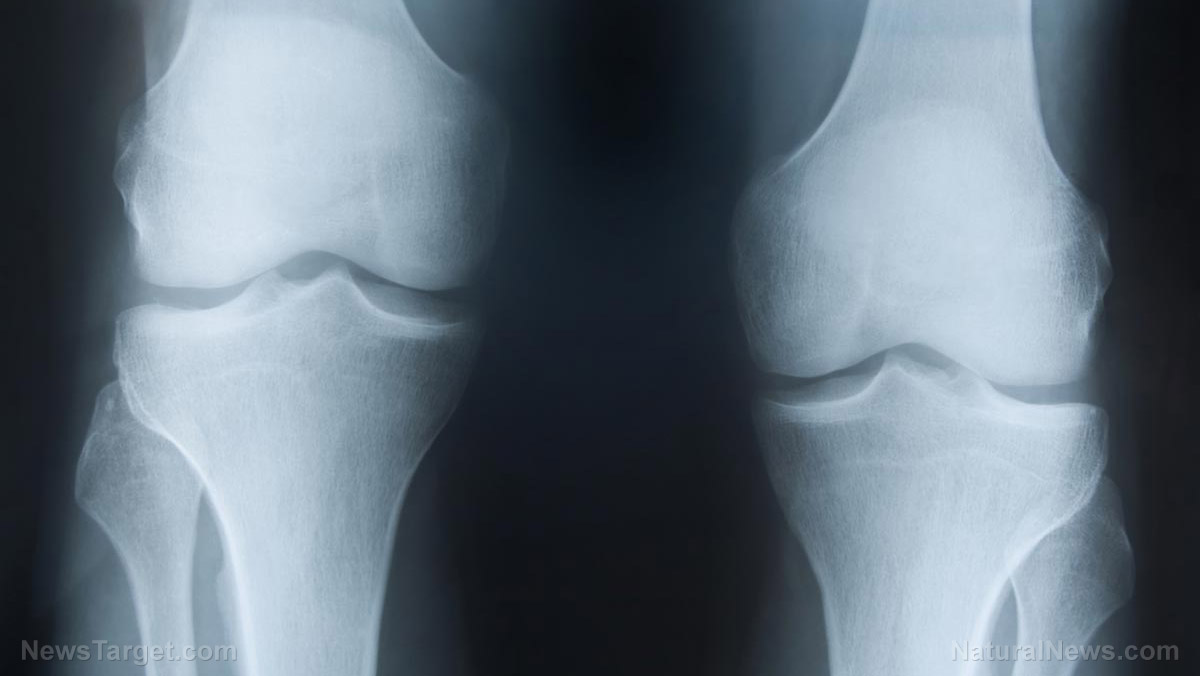Use it or lose it: Study shows taking 6,000 steps a day reduces risk of functional mobility loss due to osteoarthritis in the knees
03/09/2019 / By David Williams

If a part of your body hurts, your first instinct might be to stop moving or using that part of your body. After all, pain often comes from external pressure on certain body parts, so it makes sense to stop applying that pressure or stop it from happening. But in the case of patients who are suffering from knee osteoarthritis (OA), the best advice might be something that seems counter-intuitive at first: keep walking.
Indeed, a new study suggests that walking can actually reduce the risk of so-called functional limitation normally associated with knee OA. To be more specific, the study shows that walking for a total of 6,000 steps or more each day can help protect those with or at risk of knee OA from developing severe mobility issues that will make it difficult to move around.
The study, which was funded in part by grants from the National Institutes of Health (NIH), was published in the American College of Rheumatology (ACR) journal, Arthritis Care and Research.
Details of the study
According to Daniel White, lead author of the study from Sargent College at Boston University in Massachusetts, they aimed to determine if there were any benefits to walking for those with knee OA. If there were, how much walking would be necessary.
“Our study examines if more walking equates with better functioning, and if so, how much daily walking is needed to minimize risk of developing problems with mobility in people with knee OA,” he explained.
Medical evidence show that two-thirds of U.S. adults never walk more than 90 minutes per week. The researchers used this as a basis for their study, where they took 1,788 people with or at risk for knee OA and measured their daily steps. All study participants were part of the Multicenter Osteoarthritis Study, and took part in walking for research for seven days.
The study involved checking back on the participants two years later for functional limitation, which is defined as a slow walking speed as well as a Western Ontario and McMaster Universities Arthritis Index (WOMAC) physical function score of more than 28 out of 60.
After taking account their research results, Dr. White concluded that there is a certain “magic number” of steps that should be the bare minimum per day if you want to get the maximum benefits from walking, especially if you suffer from or are at risk for knee OA.
That number is 6,000.
“Walking is an inexpensive activity and despite the common popular goal of walking 10,000 steps per day, our study finds only 6,000 steps are necessary to realize benefits,” states White. “We encourage those with or at risk of knee OA to walk at least 3,000 or more steps each day, and ultimately progress to 6,000 steps daily to minimize the risk of developing difficulty with mobility.”
Other benefits of walking
Apart from reducing the risk of losing functional mobility by exercising the knees despite OA, there are other benefits to walking. For one thing, walking has been shown to impact individual happiness levels. It can help clear the mind and get rid of inner anxiety, which is important in achieving a certain level of joy. Walking is also necessary for decreasing the risk of illness or disease, boosting the immune system without the need for supplements or medication.
All of this, of course, points to a longer life. And since it’s free, you’ve got nothing to lose except a little bit of your time.
Sources include:
Submit a correction >>
Tagged Under:
anti-aging, arthritis, bad knees, exercise, fitness, joint health, joint pain, knee pain, longevity, mobility, Osteoarthritis, prevention, remedies, slender, walking
This article may contain statements that reflect the opinion of the author
RECENT NEWS & ARTICLES
COPYRIGHT © 2017 WOMENS FITNESS FOCUS




















